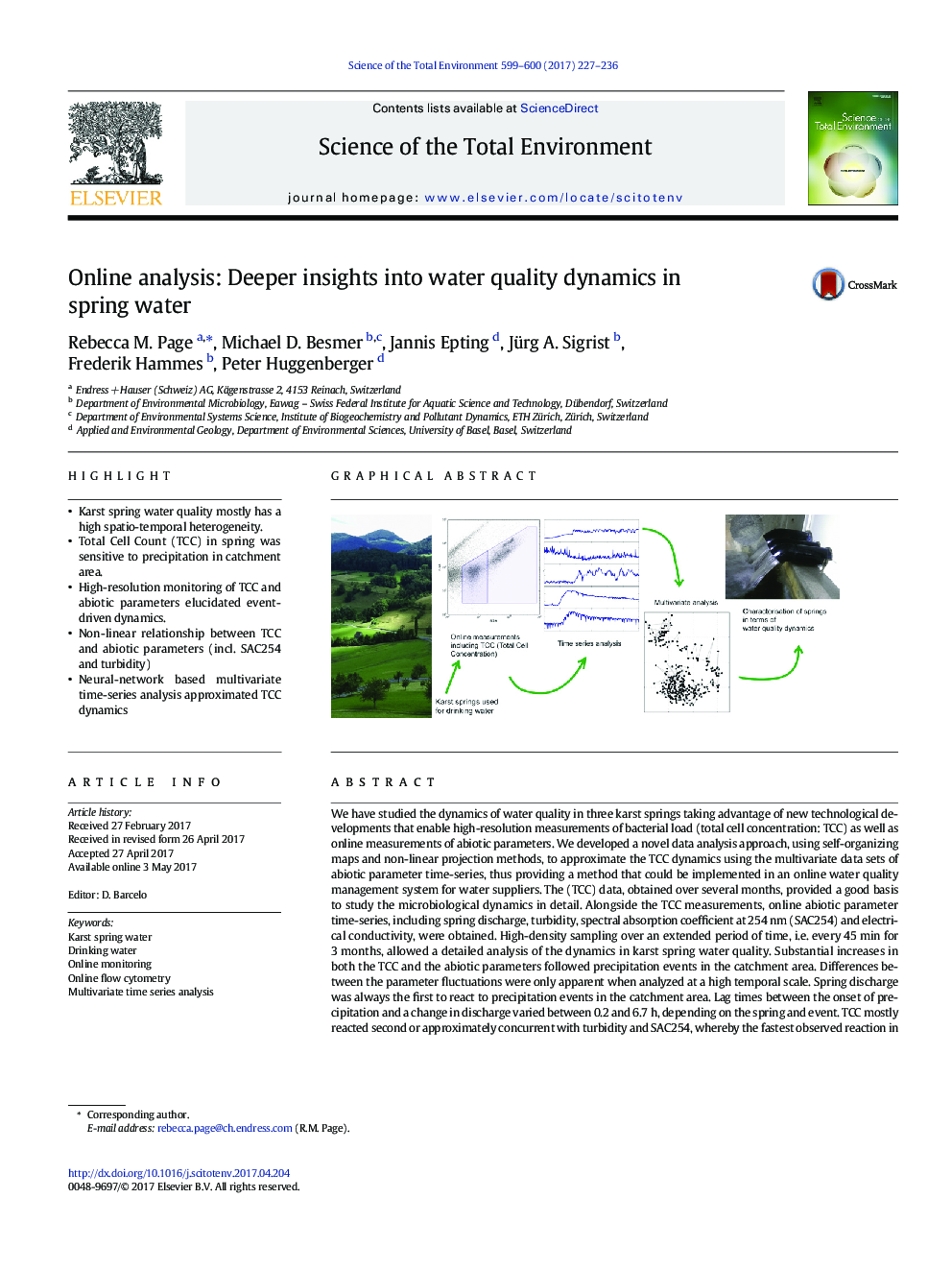| کد مقاله | کد نشریه | سال انتشار | مقاله انگلیسی | نسخه تمام متن |
|---|---|---|---|---|
| 5750487 | 1619698 | 2017 | 10 صفحه PDF | دانلود رایگان |
Highlight
- Karst spring water quality mostly has a high spatio-temporal heterogeneity.
- Total Cell Count (TCC) in spring was sensitive to precipitation in catchment area.
- High-resolution monitoring of TCC and abiotic parameters elucidated event-driven dynamics.
- Non-linear relationship between TCC and abiotic parameters (incl. SAC254 and turbidity)
- Neural-network based multivariate time-series analysis approximated TCC dynamics
We have studied the dynamics of water quality in three karst springs taking advantage of new technological developments that enable high-resolution measurements of bacterial load (total cell concentration: TCC) as well as online measurements of abiotic parameters. We developed a novel data analysis approach, using self-organizing maps and non-linear projection methods, to approximate the TCC dynamics using the multivariate data sets of abiotic parameter time-series, thus providing a method that could be implemented in an online water quality management system for water suppliers. The (TCC) data, obtained over several months, provided a good basis to study the microbiological dynamics in detail. Alongside the TCC measurements, online abiotic parameter time-series, including spring discharge, turbidity, spectral absorption coefficient at 254Â nm (SAC254) and electrical conductivity, were obtained. High-density sampling over an extended period of time, i.e. every 45Â min for 3Â months, allowed a detailed analysis of the dynamics in karst spring water quality. Substantial increases in both the TCC and the abiotic parameters followed precipitation events in the catchment area. Differences between the parameter fluctuations were only apparent when analyzed at a high temporal scale. Spring discharge was always the first to react to precipitation events in the catchment area. Lag times between the onset of precipitation and a change in discharge varied between 0.2 and 6.7Â h, depending on the spring and event. TCC mostly reacted second or approximately concurrent with turbidity and SAC254, whereby the fastest observed reaction in the TCC time series occurred after 2.3Â h. The methodological approach described here enables a better understanding of bacterial dynamics in karst springs, which can be used to estimate risks and management options to avoid contamination of the drinking water.
365
Journal: Science of The Total Environment - Volumes 599â600, 1 December 2017, Pages 227-236
